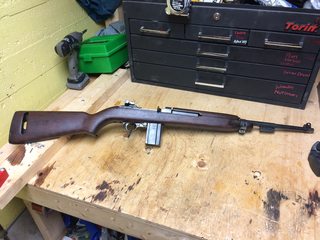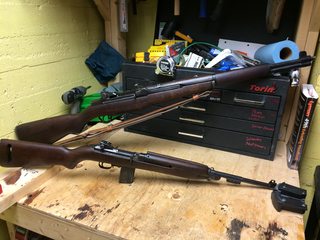Well, I figured I would just share my most recent purchase. It's a 1944 Inland General Motors M1 Carbine. It is a mix master of parts and has some pitting on some metal, but I love it all the same. I prefer my guns to have the been there done that look anyway.
Here is a quick parts rundown from my few hours of reading.
Here is a complete album with more pics: http://imgur.com/gallery/Sp21J


The Garand in the last pic is a 1955 International Harvester. It is also one of the 4000 or so Harvesters that was made by Harrington & Richardson.
Here is a quick parts rundown from my few hours of reading.
- Bolt: Winchester
- Slide: Winchester
- Trigger group: A more purple colour to the metal and marked S'G' for Saginaw
- Recoil plate: Inland PI stamped
- Stock: OI Inland stamped with 156 as a serial number
- Handguard: JLB stamped but also stamped 156
- Hammer: Utica Cutlery
- Front sight: RIA post war
- Rear sight: Post war stamped
Here is a complete album with more pics: http://imgur.com/gallery/Sp21J


The Garand in the last pic is a 1955 International Harvester. It is also one of the 4000 or so Harvesters that was made by Harrington & Richardson.






































































